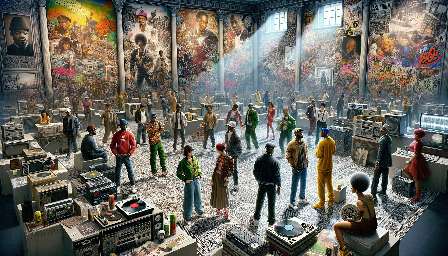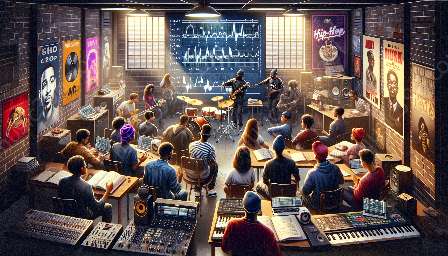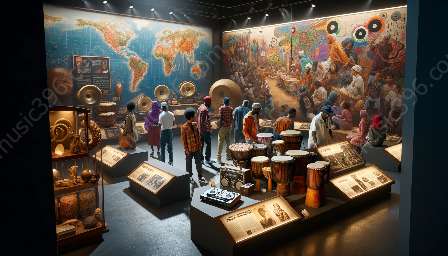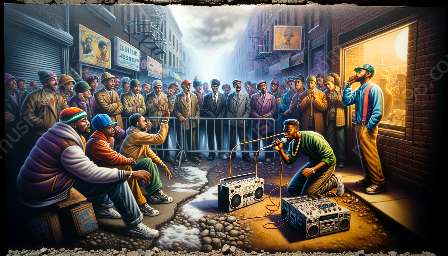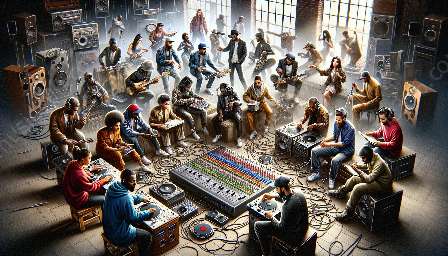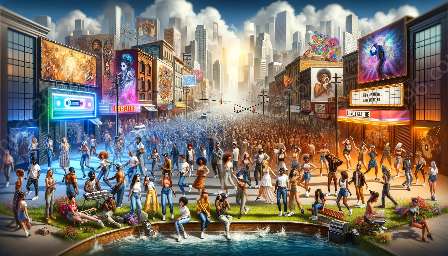Urban and hip-hop music have been significantly impacted by technology, revolutionizing the production, distribution, and reach of the genre. This article explores the historical context and the ways technology has shaped the urban and hip-hop music industry.
The Evolution of Urban & Hip-Hop Music
Urban and hip-hop music emerged in the late 1970s and early 1980s as a product of the unique cultural and social landscape of inner-city communities. Inspired by diverse genres such as disco, funk, and reggae, urban and hip-hop music quickly gained popularity due to its raw and authentic expression of urban life, struggles, and triumphs.
Historical Context
Before the rise of technology, the production and distribution of urban and hip-hop music were heavily reliant on physical mediums such as vinyl records, cassette tapes, and CDs. Artists and producers faced significant barriers to reaching a broader audience, as traditional record labels controlled the majority of distribution channels. However, the emergence of technology brought about a seismic shift in the music industry, democratizing access to production and distribution.
Impact of Technology on Production
Advancements in music production software and digital recording equipment have revolutionized the way urban and hip-hop music is created. Digital audio workstations (DAWs) such as Pro Tools, Ableton Live, and FL Studio have empowered artists and producers to create, mix, and master music with unprecedented flexibility and precision. The accessibility of these tools has allowed aspiring musicians to produce professional-quality tracks from the comfort of their homes, eliminating the need for expensive studio time.
Additionally, the proliferation of virtual instruments and sample libraries has expanded the sonic palette available to urban and hip-hop producers, enabling the incorporation of diverse sounds and textures into their compositions. Technology has also facilitated the use of techniques such as pitch correction and vocal manipulation, allowing artists to achieve desired vocal effects and refine their performances.
Digital Distribution and Online Platforms
The advent of the internet and digital streaming platforms has dramatically transformed the distribution of urban and hip-hop music. With the rise of platforms such as Spotify, Apple Music, and SoundCloud, artists have gained direct access to global audiences without the need for traditional record label contracts. Independent and underground musicians now have the opportunity to release their music to a worldwide audience, thereby challenging the dominance of major record labels.
Furthermore, social media has played a pivotal role in the promotion and discovery of urban and hip-hop music. Artists can engage directly with their fan base, share new releases, and build a devoted following through platforms like Instagram, Twitter, and TikTok. The viral nature of social media has allowed emerging artists to generate buzz and cultivate a loyal fan base, leading to organic growth and exposure.
Cultural Impact and Global Reach
Technology has spurred the globalization of urban and hip-hop music, transcending geographical boundaries and connecting artists with diverse audiences worldwide. The accessibility of music streaming services and social media has facilitated the exchange of ideas, sounds, and trends across different cultural landscapes, contributing to the genre's evolution and hybridization.
Furthermore, the democratization of music production and distribution has empowered artists from marginalized communities to share their stories and experiences on a global stage, amplifying voices that were previously underrepresented in the mainstream music industry.
The Future of Urban and Hip-Hop Music
As technology continues to advance, urban and hip-hop music are poised to undergo further evolution. Innovations in artificial intelligence, virtual reality, and immersive audio technologies hold the potential to reshape the creative process and live music experiences. The intersection of music, technology, and culture will undoubtedly continue to shape the trajectory of urban and hip-hop music in the years to come.
Conclusion
From its humble beginnings in the streets of New York City to its global prominence today, urban and hip-hop music have been indelibly influenced by technology. The democratization of music production, the proliferation of digital distribution platforms, and the global connectivity afforded by technology have contributed to the genre's enduring impact and influence. As urban and hip-hop music continue to evolve in the digital age, the role of technology in shaping the art form remains central to its growth and innovation.




